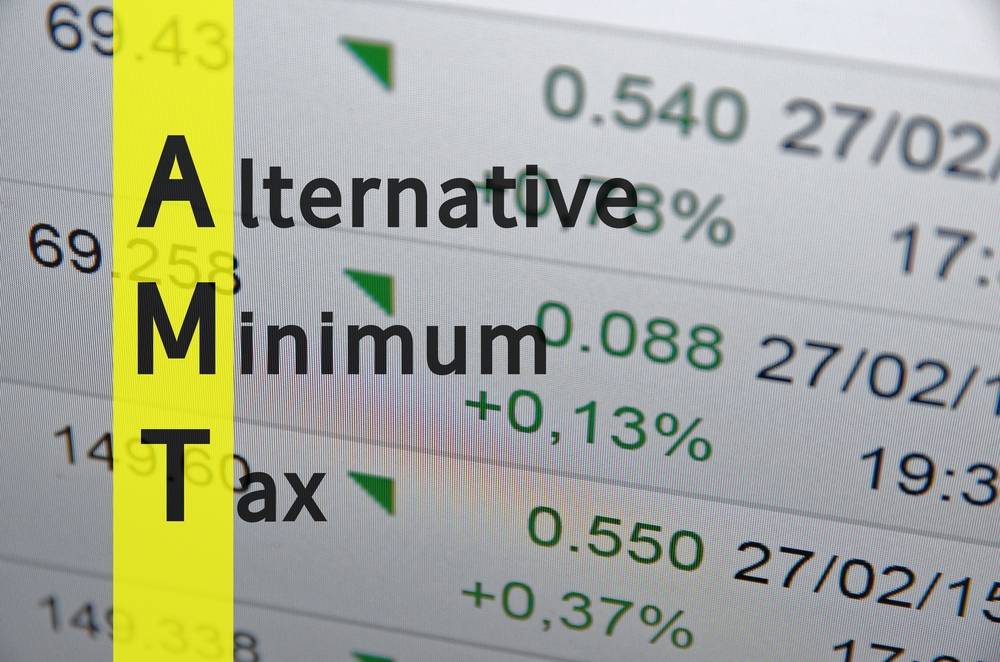 Last updated: March 26th, 2020 2:04 AM
Last updated: March 26th, 2020 2:04 AM
Alternate Minimum Tax (AMT)
Tax is the prime source of revenue for the Government of India. To encourage tax payment, the Government has given the taxpayers the benefits of multiple deductions and incentives. However, this facility has resulted in some companies becoming zero tax paying units. In order to maintain a balance between such deductions and to ensure the levy of tax on zero tax paying units, the Alternate Minimum Tax (AMT) was introduced under the income tax act. In this article, we look at the Alternate Minimum Tax in detail.Alternate Minimum Tax
Alternate Minimum Tax is the tax levied on income at the rate of 18.5% along with applicable surcharge and cess. AMT is levied on adjusted income in a financial year in case the tax payable on normal income is less than AMT on adjusted total income.What is Adjusted Total Income?
Adjusted Total Income is a gross income that is increased by adding all the deduction covered under heading C of chapter VI-A. Therefore, all deduction from Section 80HH to Section 80RRB are added to the gross income except the Section 80P and Section 10AA.Applicability of Alternate Minimum Tax (AMT)
The following are the entities applying for the Alternative Minimum Tax (AMT):- Any non-corporate taxpayers
- Any taxpayer who has claimed the deductions under Section 80H to Section 80RRB. Also, this deduction is allowed to claim only by specific industries such as small scale undertakings, hotels, export business, infrastructure development, etc.
- Any taxpayer who has claimed a deduction of 100% of capital expenditure incurred in a financial year under Section 35AD.
- Any taxpayer who has claimed a deduction of 50% to 100% of profit provided to the units of SEZ under Section 10AA.
Exemption from Alternate Minimum Tax
The provisions under alternate minimum tax do not apply for the following:- Any assessee is an individual, Hindu Undivided Family (HUF), Associations of Persons (AOP), Body of Individuals (BOI), Artificial Juridical Person.
- Any assessee who is a corporate taxpayer.
- Any taxpayer whose adjusted total income not exceeding Rs. 20 lakhs.
Tax Rate as per AMT
The rate of tax as per the alternate minimum tax are tabulated below:| S.No | Adjusted Total Income | In the case of firms or cooperative society | Any other non-cooperative assessee |
| 1. | If the adjusted total income is up to Rs. 1 crore. | 19.055% (Inclusive of surcharge and cess) | 19.055% (Inclusive of surcharge and cess) |
| 2. | If adjusted total income exceeding Rs. 1 crore. | 21.3416% (Inclusive of surcharge and cess) | 21.91325% (Inclusive of surcharge and cess) |
Credit and Carry Forward of AMT
As per the section 115JD of the income tax Act, the Alternate Minimum Tax (AMT) is payable in case the normal amount of tax payable is less than the tax amount payable under AMT. Any difference between normal taxpayer and tax paid with respect to AMT is allowed as an AMT credit. Such credit can be adjusted with normal tax liability arising in subsequent or future year in which regular tax payable exceeding AMT. The amount of tax credit can be set off and carried forward until the 15th assessment year following the assessment year in which such tax credit was allowed. During any financial year, such tax credit is allowed to be set off to the extent of the excess of regular income tax over and above the tax payable under the provisions of AMT.Claiming of AMT Credit
The following are the conditions to be satisfied for claiming of AMT credit.- The credit should set off up to the maximum period of the fifteen assessment year.
- No interest is allowed to be payable on such credit
- The tax credit under section 115JD varies in case the amount of normal income tax or any AMT changes due to order passed under the income tax act.
Report
The assessee on whom the provisions under AMT apply should get a report in the prescribed format from a Charactered Accountant (CA) certifying that the total adjusted income and alternative minimum tax has been calculated as per the provisions of the AMT.Popular Post

In the digital age, the convenience of accessing important documents online has become a necessity...

The Atalji Janasnehi Kendra Project that has been launched by the Government of Karnataka...

The Indian Divorce Act governs divorce among the Christian couples in India. Divorce...

When an individual has more than a single PAN card, it may lead to that person being heavily penalised, or worse,...

Employees Provident Fund (PF) is social security and savings scheme for employee in India. Employers engaged...


